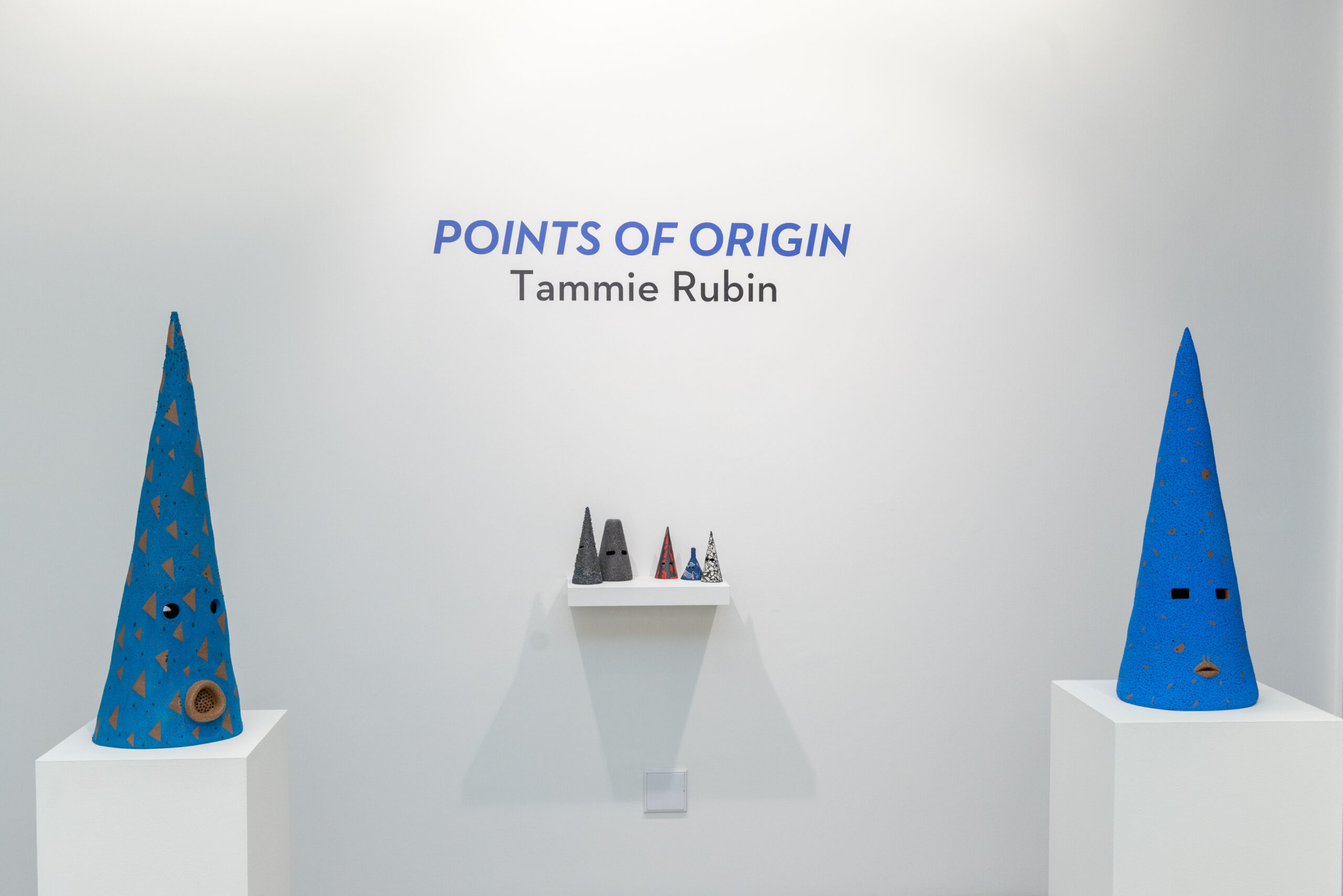
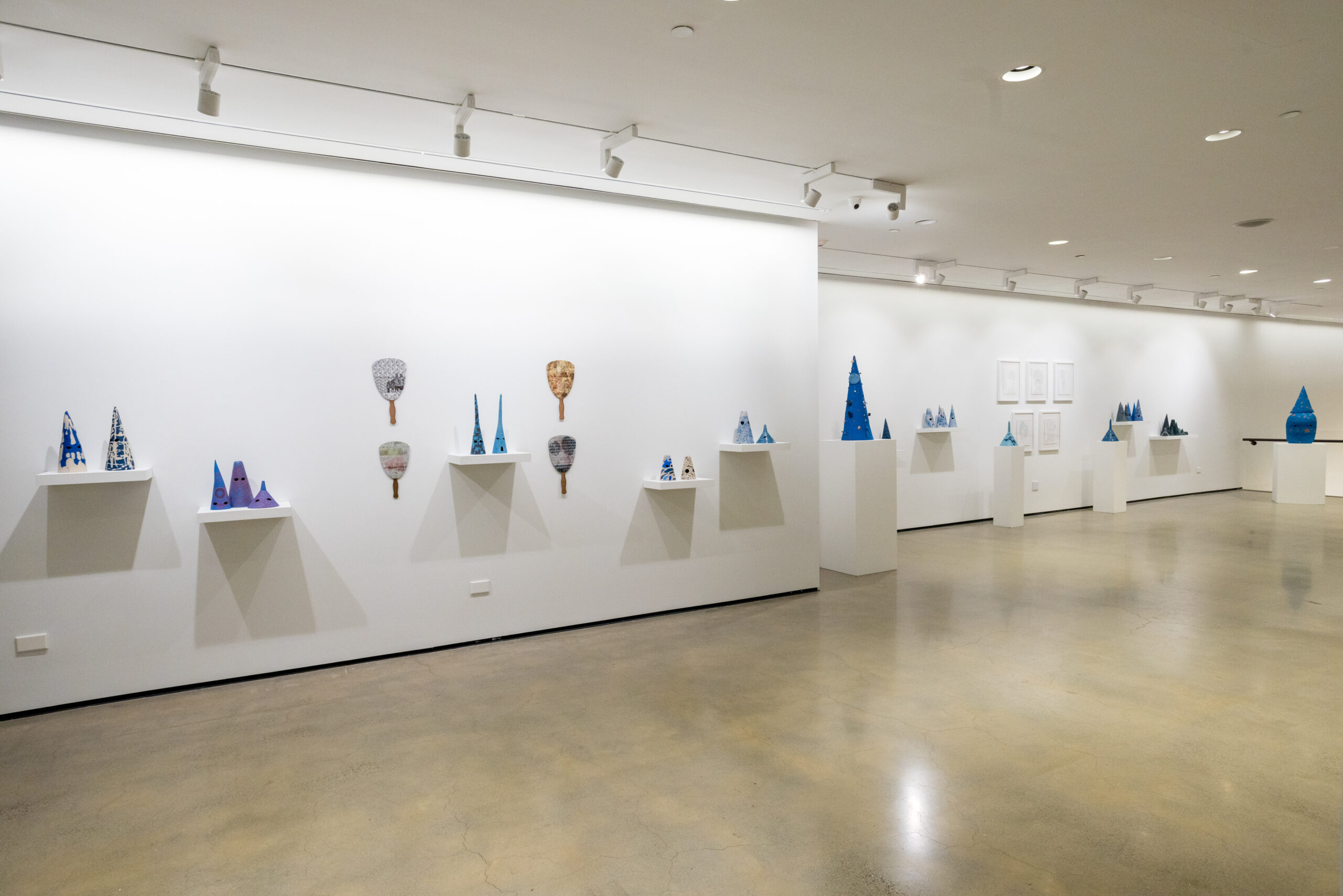

To the left, right, horizon, and periphery, fifty conical ceramic masks of various proportions are plotted throughout the gallery, echoing an ominous air. The staccato-sharp masks, coated with buzzing blues and adorned with pointillist protrusions, are animated with disconcerting expressions, interlocking and confronting viewers with their cryptic and unwavering gaze. Taking a reticent step closer, the contours of masonite prayer fans and plotter ink drawings featuring symbolic and figurative imagery emerge—anchoring the abstracted hoods with narratives personal to the artist, Tammie Rubin.
Originating from multiple axes to create a nexus of works revolving around the common theme of faith, Points of Origin, C24 Gallery’s latest exhibition, serves as a documentation of Rubin’s extensive historical research, a celebration of her master craftsmanship, and an intimate glimpse into her lineage. Although the ensemble of pieces possess contrasting formal qualities and viewpoints, David Terry, the director of the gallery and curator of the show, explains:
“When you think of the point of origin, and where you come from, that could be from many places. [Rubin’s] work and this body of work come from many different areas of her life, African American culture, American culture, women in her family, and the threads that make up the fabric of the country.
So when she was bringing [the pieces] out, I got really excited because they’re all from the same context, but she's exploring different media. And I love it when artists carry the same theme through but realize and recognize it through different forms, communicating at many levels to many different people.”
Creating a metaphysical altar and paying homage to her family and the Black American experience, the varying vantages harmonize in spiritual unison with their shared explorations of The Great Migration and Reconstruction—subjects Rubin hadn’t considered in her practice until she migrated to Texas in 2015. She elaborates:
“It was specifically about this idea of moving to Austin. You know, I moved here for a job, and that's when I started to think about my parents in a historical context. I'm taking from my family stories and then expanding that into larger research about other Black families that have had this experience and whose stories haven't been told. I’m reflecting on conversations about Black Americans having their history not being represented in our world.”
In fact, according to author Isabel Wilkerson, The Great Migration—a period from roughly 1910 to 1970 when six million African Americans mass relocated from the Jim Crow South to the North—was “the greatest and biggest underreported story in the 20th century.”


As the descendant of parents who migrated and met in Chicago (mother from southern Mississippi and father from Memphis, Tennessee), Rubin unveils their neglected history and memorializes her family and Black families alike in an archival collection.
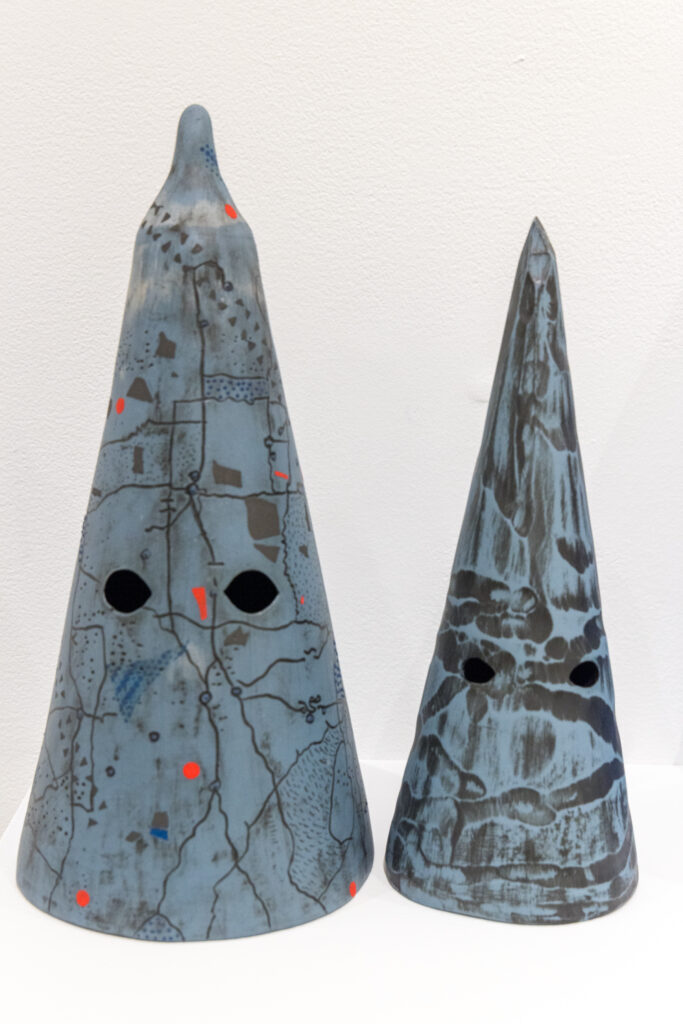
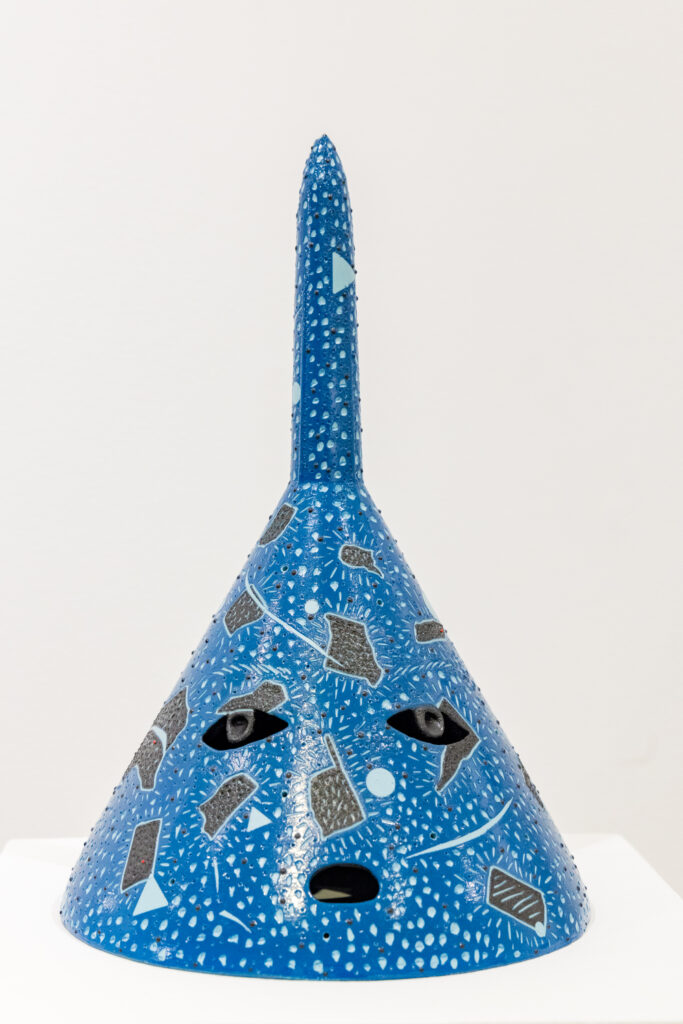
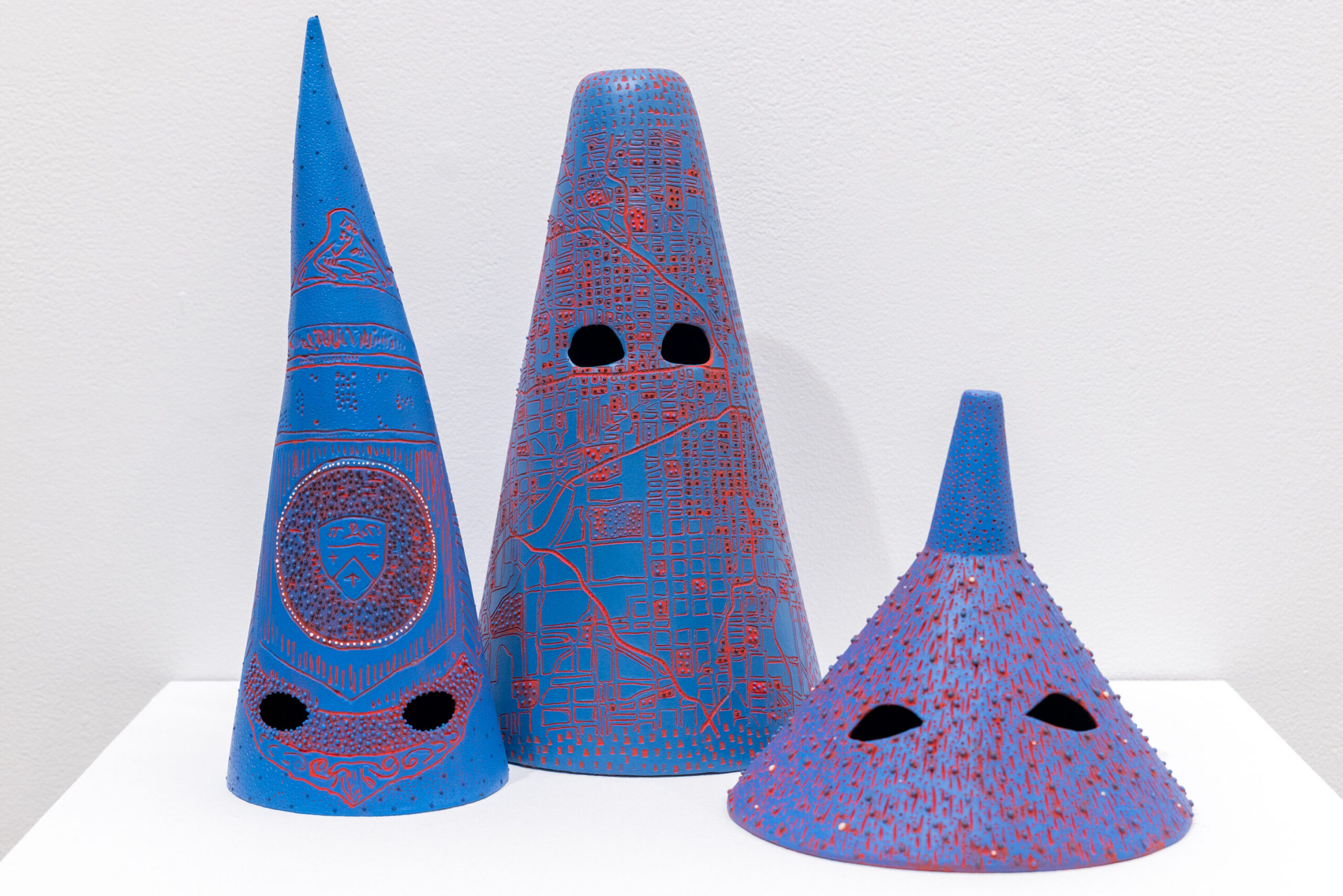
A clan of three ceramic hoods with pigmented Delphinium and Vivid Blue skin and scars of Radiant Red stand on a floating shelf by the entrance. The central figure, with a leveled head resembling a motherboard, represents a map of Chicago. Similar patterns of cities and migratory paths are also present on other masks in her Always & Forever (forever, ever) series.
On the right of the No.17 tribe, a funnel-shaped form with sgraffito rain strokes, dots, and beaded relief creates a sensational feast for the visual cortex. Although the mask isn’t directly portraying routes, the dynamic movement metaphorically alludes to migration as the pulsating red synchronizes and dances with the blue.
The particularly pointy, slanted hood has a more regal personality. Embellished with an obscured badge, a symbol originating from the Medieval Period, the hood contemplates power, principally within the context of law enforcement. Laced with Medieval and magical influences, the masks may appear solely, or most familiarly, to reference the Ku Klux Klan, but they also attribute to Knight and Shaman helmets, dunce caps, and wizards.

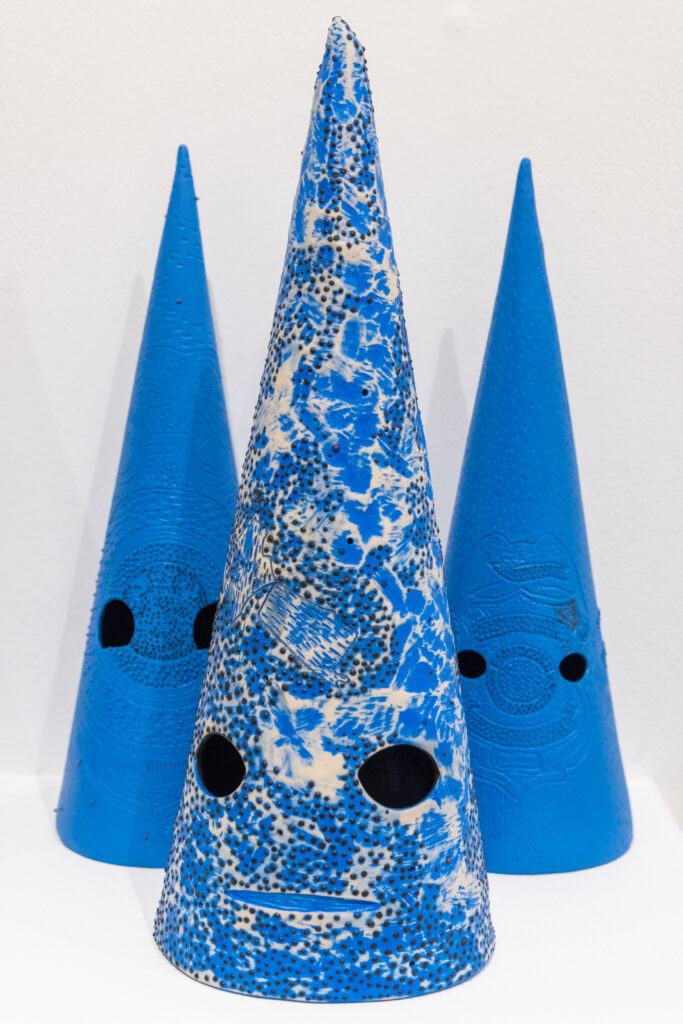
Rubin builds sizable, totemic red stoneware forms as seen in her Unknown Ritual Mask series and practices slip-casting smaller everyday objects—cones, funnels, food containers, and vintage lighting—reconfiguring them into non-functional headdresses. After making a mold, she speedily scratches, carves, punctures, and pipes beading onto the surface as they quickly dry.
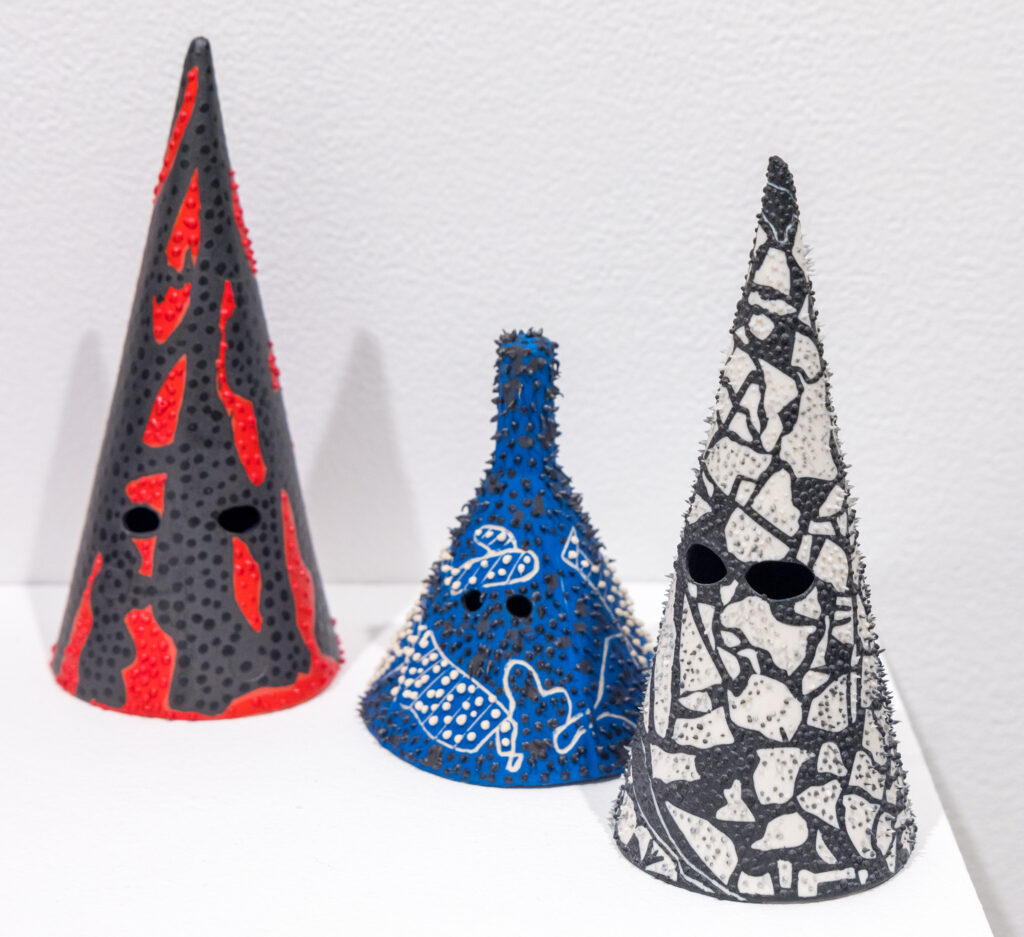
“I think of all the mark-making that is repetitious as black bodies moving through space and time, so I’m physically marking that onto the surface of the ceramic forms. […] I’m interested in how to suffuse the form with another point of visual communication through the surface itself.”
Rubin then paints the pigmented porcelains, with sumptuous lines, shapes, and stencils. Some cones resemble Abstract Expressionist and contemporary paintings, others African beadwork, Aboriginal mark-making, and ornamental designs.


The exhibition is filled with a profusion of symbols. The plotter ink drawings portray hagiographical portraits of her grandmother, mother, and aunts all adorned with turnip, mustard, and collard green halos—food staples prominent in Rubin's upbringing. Masonite fans, framing the ceramic cones, are symbolic references to the prayer fans that were predominantly present in black churches and funeral homes to keep the congregation cool. Marked with text, figures, floral, dotted, and migratory patterns, the iconographical fans provide a window into the past and become profound relics that take on resonance and emanate the power of faith.
Rubin’s cerebral and complex perspectives are captured in Points of Origin, a transcendental exhibition visually and conceptually mapping and highlighting one of the most significant and overlooked demographic shifting events that will forever change the structure, history, and future of the United States of America. She emphasizes, “Black history is not separate from American history. These are Americans.” The diverse array of works converges into a singular point of origin, commemorating and celebrating the contributions and stories of Rubin and Black families who’ve built the foundation of the country.
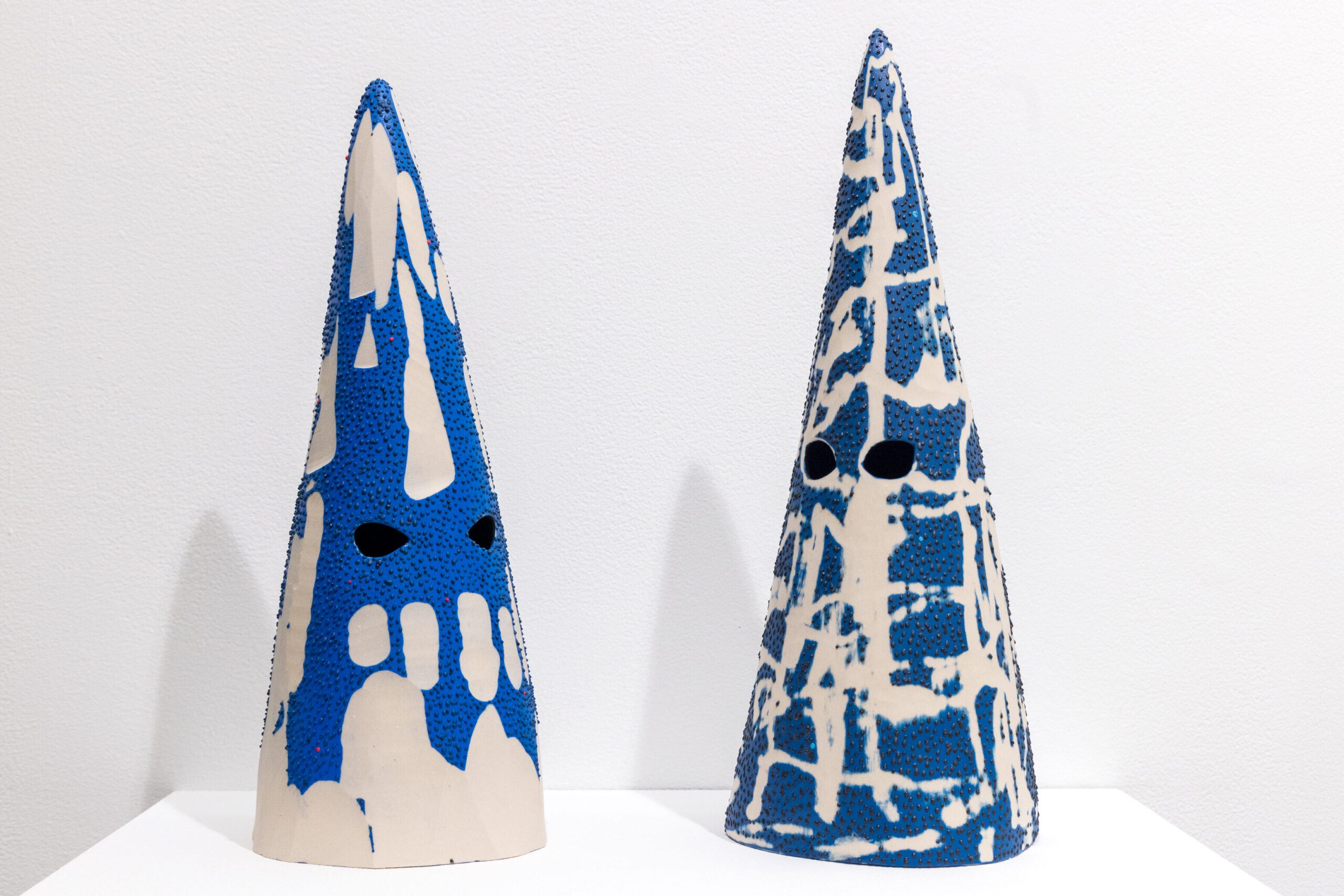
“There is no American culture without black American culture. You can't say, well, they did it. We did it. We did it together.”
- Jacob Lawrence
Visit C24 Gallery at 560 W 24th Street New York, NY 10011, or explore and learn more about the exhibition "Points of Origin" and Tammie Rubin's works online at C24 GALLERY
